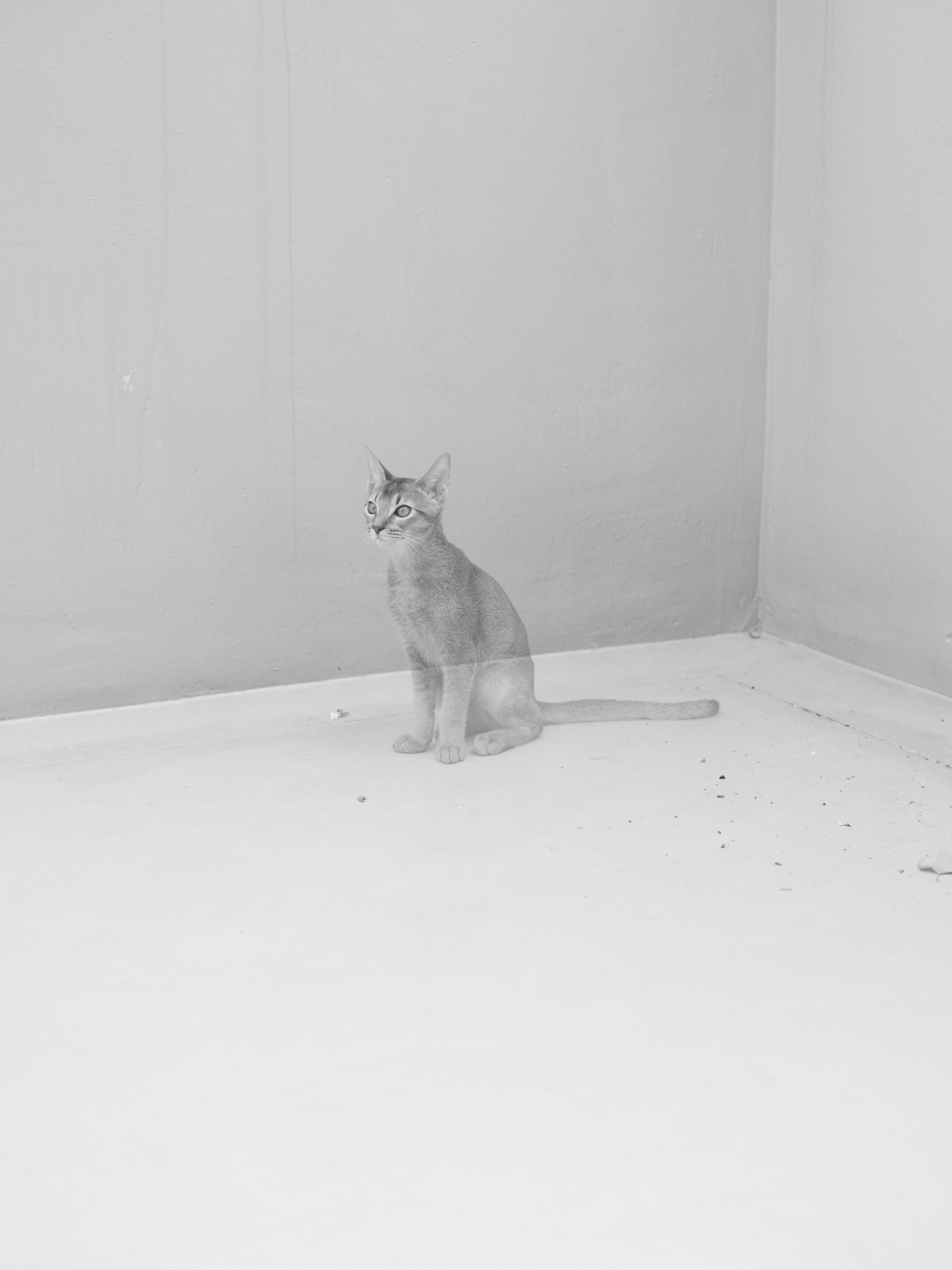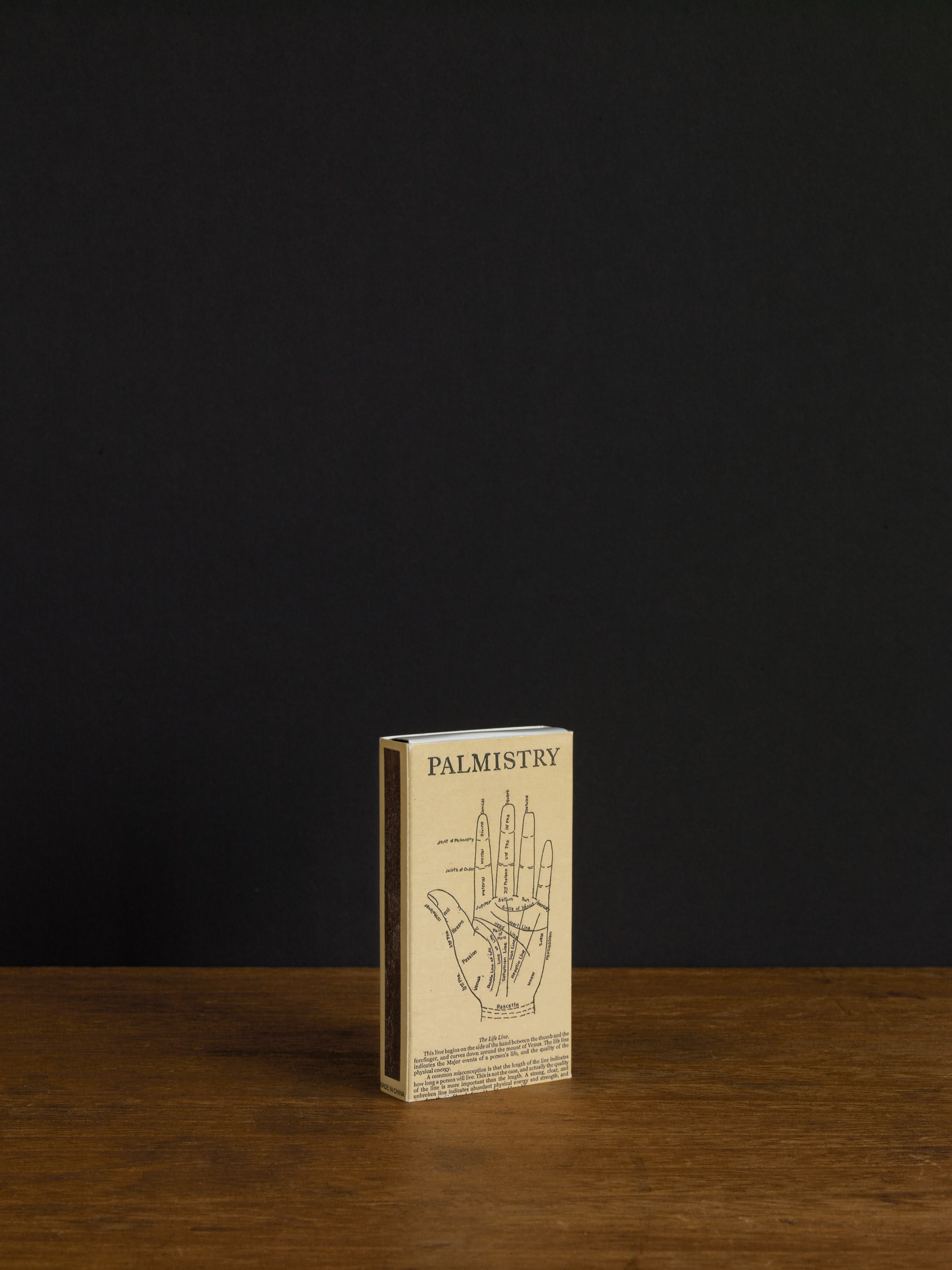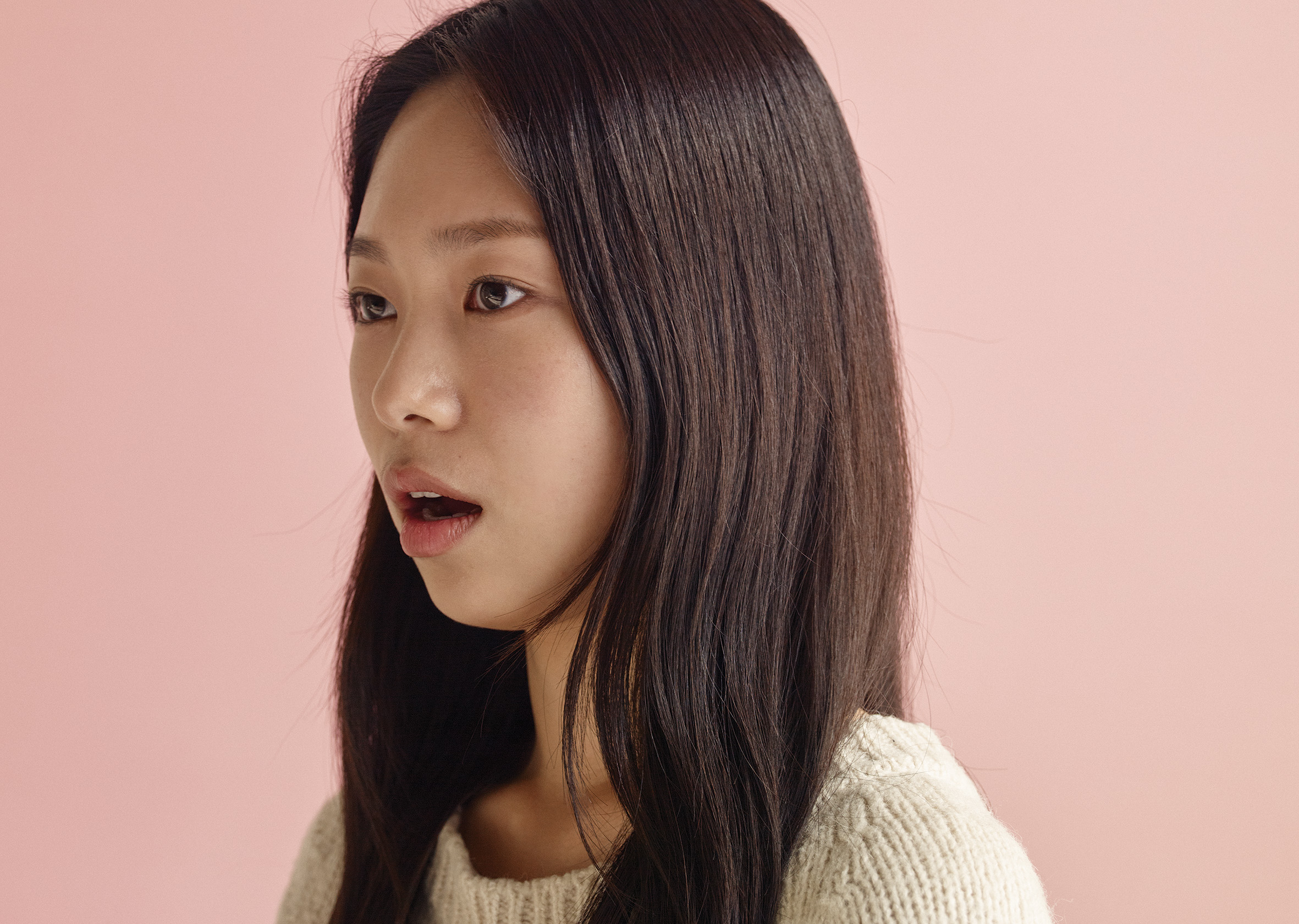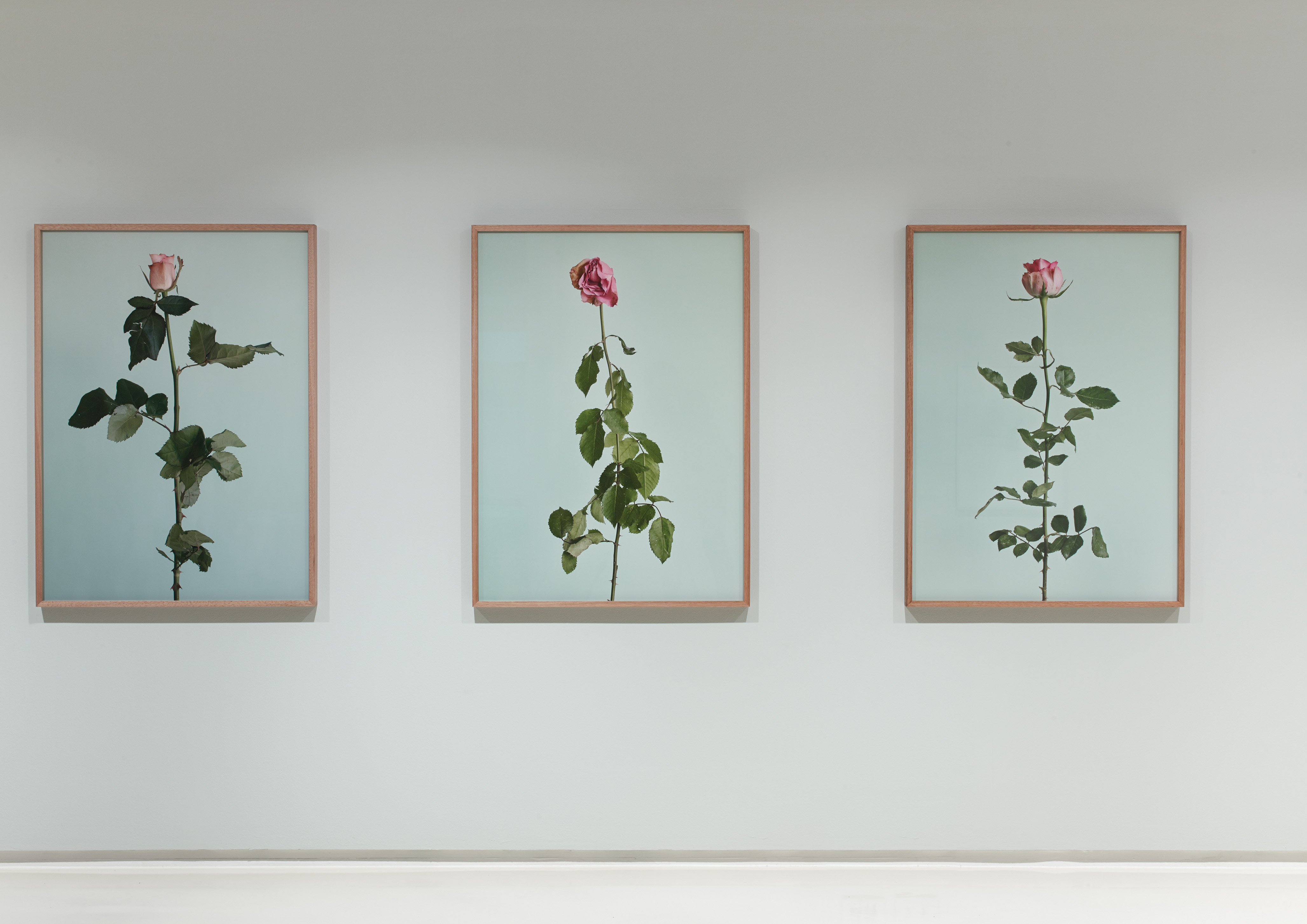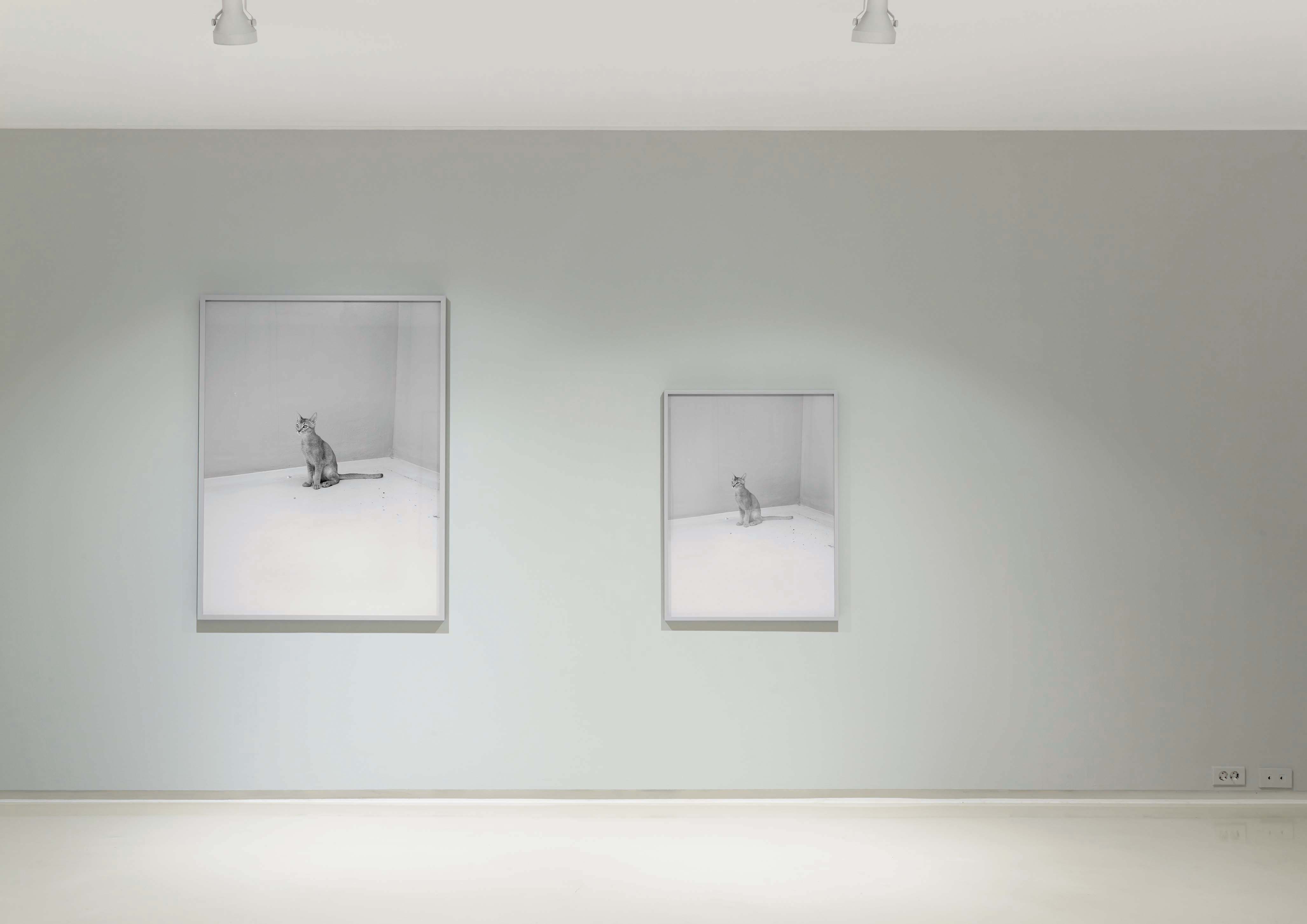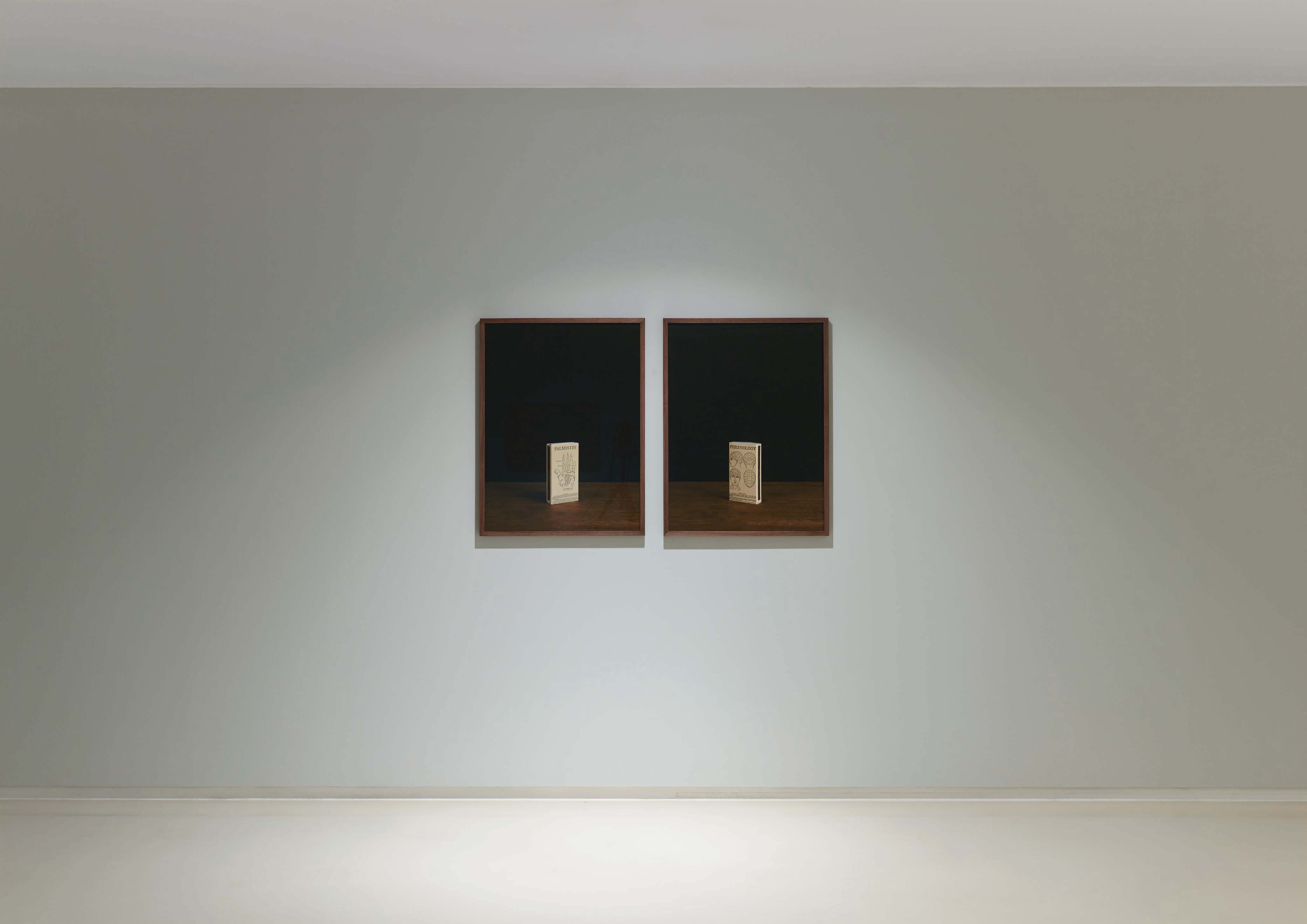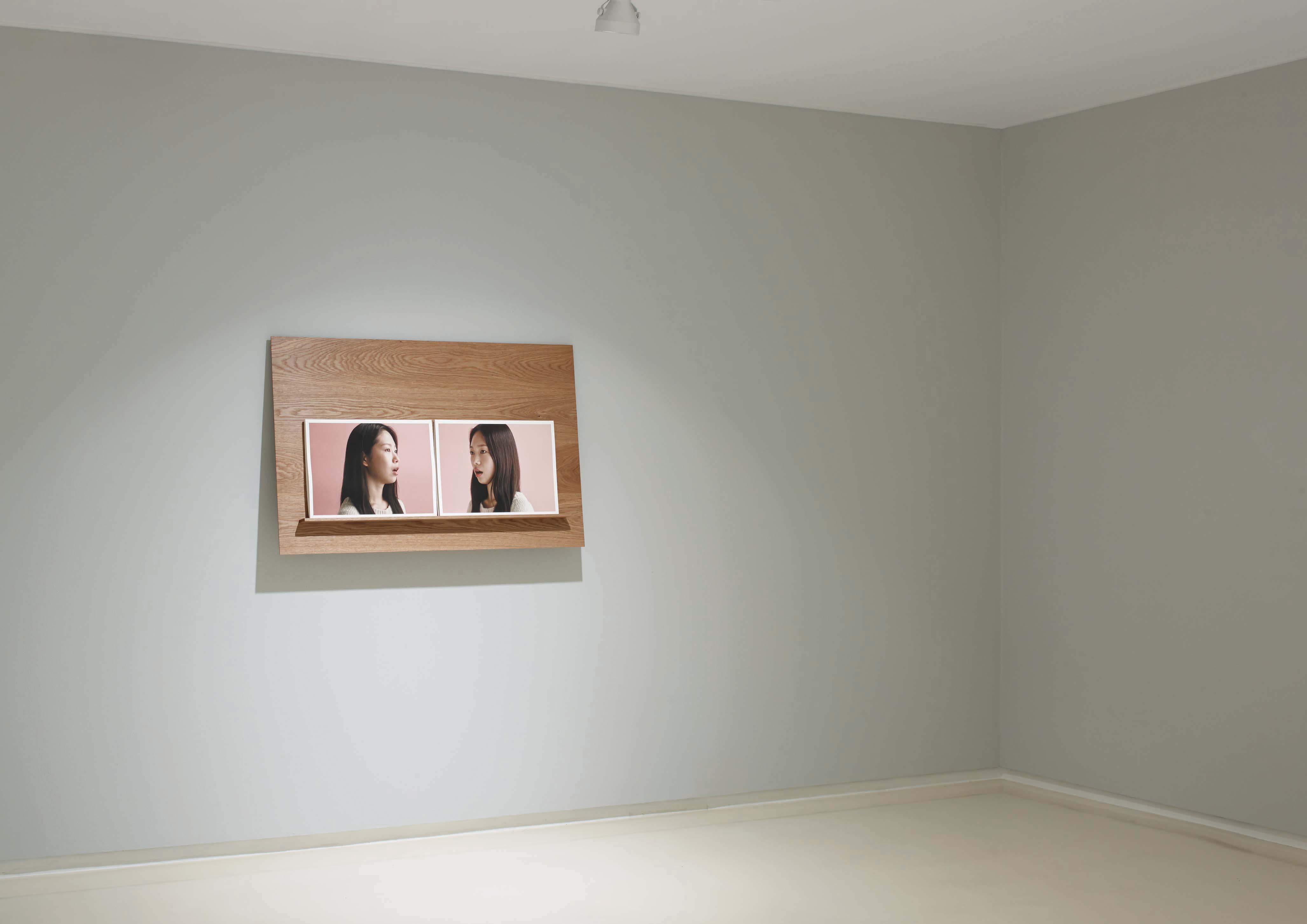Exhibitions

PERIGEE ARTIST #8 정희승
ROSE IS A ROSE IS A ROSE
2016.03.11. FRI ~
2016.05.07. SAT
이미지와 의미의 망각에 대하여
신승오(페리지갤러리 디렉터)
정희승의 작업은 어떤 대상이 인물의 외형을 통해 내면을 드러냄으로써 외피와 내부를 넘나드는 인물의 초상이미지에서 시작되어 이후에는 자신의 주변에서 발견된 사물을 대상으로 삼아 화면에 담아내는 <Still life>를 선보여 왔다. 이러한 작업들을 통해 작가는 대상이 가지고 있는 기존의 의미와 그 내면에 존재하고 있는 의미를 이를 바라보고 경험하는 작가의 개인적인 시선으로 지속적인 탐구를 해왔다. 최근에는 <Still life>처럼 명확한 대상이 등장하는 화면 구성임에도 불구하고 명확한 피사체와 더불어 나타나는 배경이 서로에게 영향을 주고 있어 작가의 시선이 향하고 있는 중심이 불명확한 작업을 선보이고 있다. 이는 명확하게 피사체를 재현하여 그 존재를 밝혀내기 위해서도 아니며 롤랑 바르트가 이야기하는 표피적인 외형 속에 담겨있는 또 다른 의미들과 분위기를 뜻하는 개념인 ‘풍크툼’을 발견하여 담아내기 위한 작업으로 보이지도 않는다. 형식적인 모습으로만 본다면 최근에 선보이는 작업들은 어느 특정한 방향으로 진행되지도, 특정한 카테고리로 묶여지지도 않는다. 그렇다면 이러한 작업들 속에서 작가가 추구하고자 하는 방향은 어떤 것일까? 이것을 알아가는 것이 이번 작업을 파악하는 열쇠가 될 것이다.
먼저 전시 제목에 주목해보자. 전시 제목인 <ROSE IS A ROSE IS A ROSE>에서 그....
On the Oblivion of Imagery and Meaning
By Shin Seung-oh, Perigee Gallery Director
Heeseung Chung initially worked on portrait images in which she revealed persons’ inner world through their outer appearance. She then presented the Still life series that features objects found in her surroundings. Through this work Chung has consistently explored the preexisting and inward meaning of objects from her individual perspective. She recently presents works in which it is unclear where her eyes are turned, because the clear subject of photography is mutually influenced by its background despite compositions with concrete objects as in the Still life series. This seems neither to disclose the meaning of the subject through an obvious representation nor to discover and capture “punctum." Roland Barthes mentions as a special meaning and atmosphere coming from a detail on the outward appearance of an object or person. In terms of form, her latest work shows no specific tendency or fit any specific category. If so, what direction is she pursuing? This will be the key to unlock the meaning of her work on display at ....
신승오(페리지갤러리 디렉터)
정희승의 작업은 어떤 대상이 인물의 외형을 통해 내면을 드러냄으로써 외피와 내부를 넘나드는 인물의 초상이미지에서 시작되어 이후에는 자신의 주변에서 발견된 사물을 대상으로 삼아 화면에 담아내는 <Still life>를 선보여 왔다. 이러한 작업들을 통해 작가는 대상이 가지고 있는 기존의 의미와 그 내면에 존재하고 있는 의미를 이를 바라보고 경험하는 작가의 개인적인 시선으로 지속적인 탐구를 해왔다. 최근에는 <Still life>처럼 명확한 대상이 등장하는 화면 구성임에도 불구하고 명확한 피사체와 더불어 나타나는 배경이 서로에게 영향을 주고 있어 작가의 시선이 향하고 있는 중심이 불명확한 작업을 선보이고 있다. 이는 명확하게 피사체를 재현하여 그 존재를 밝혀내기 위해서도 아니며 롤랑 바르트가 이야기하는 표피적인 외형 속에 담겨있는 또 다른 의미들과 분위기를 뜻하는 개념인 ‘풍크툼’을 발견하여 담아내기 위한 작업으로 보이지도 않는다. 형식적인 모습으로만 본다면 최근에 선보이는 작업들은 어느 특정한 방향으로 진행되지도, 특정한 카테고리로 묶여지지도 않는다. 그렇다면 이러한 작업들 속에서 작가가 추구하고자 하는 방향은 어떤 것일까? 이것을 알아가는 것이 이번 작업을 파악하는 열쇠가 될 것이다.
먼저 전시 제목에 주목해보자. 전시 제목인 <ROSE IS A ROSE IS A ROSE>에서 그 주체이자 대상이 되는 장미는 우리가 흔히 알고 있는 그 꽃이다. 그리고 장미를 대상으로 한 작품은 <Untitled>로 그리고 숫자로 명명되어 있다. 이러한 기본적인 제목 붙임에서 유추할 수 있는 한가지 단서는 이번 전시에서 선보이는 새로운 시리즈가 우리가 바라보는 이미지를 지각하면서 발생하는 인식과 언어적인 해석에 대한 고민에서 시작되었다는 것이다. 계속해서 장미를 담아낸 작품을 살펴보자. 정희승은 장미를 고정된 프레임 안에서 계속해서 찍어 내었고, 7점의 연작으로 설치하였다. 이것은 단순히 장미를 반복적으로 재현하여 다양한 모습을 보여주기 위함이 아니다. 모든 사람들이 똑같이 장미를 인식하거나 지각하는 것은 아니지만 그 장미에 대해 통념적으로 느끼는 감정과 생각들이 존재한다. 그러나 이러한 것들은 온전히 나의 인식에서 비롯된 것이 아닌 사회에서 기본적으로 제공받는 교육과 여러 가지 공통된 경험에 의해 만들어진 고정된 틀에 의해 작용된다. 그리고 우리는 어떤 대상의 이데아 즉 하나로 귀결되는 의미가 있다고 가정하고 이들을 바라보며, 그 실체 없는 본질을 찾고자 노력한다. 또한 어떤 정의와 의미를 규정하기 위해 이름을 붙이는데 사용하는 언어와 텍스트는 이것을 고정시키는 역할을 한다. 그리고 이는 강력한 힘을 발휘한다. 하지만 하나의 대상을 하나의 의미 혹은 하나의 본질로 귀결 시키는 것은 무리가 있다. 그렇다면 이러한 한계를 넘어서기 위해서는 관찰이 우선 되어야 하는가? 하지만 시각적인 관찰 또한 피상적인 부분 만을 다룰 수 있을 뿐이다. 그렇다면 작가는 이 고정된 한계를 어떻게 극복하려고 하는가? 고유명사가 아닌 대명사로 지시되는 것들은 불확정적인 대상이다. 작가는 특정 대상을 피사체로 다루는 것처럼 보이지만 사실은 확고한 지시성을 가진 대상을 불확정적인 이것, 저것, 그것과 같은 대명사의 의미로 비워버리려고 하는 것으로 보인다.
다른 작품들은 어떤지 살펴보도록 하자. 같은 성냥갑의 앞면과 뒷면을 좌우로 대칭적으로 보여주거나, 명확하게 보이는 큰 이미지의 고양이와 함께 등장하는 또 다른 흐릿하게 보이는 똑같은 고양이는 작은 이미지로 변형을 가한다. 그 옆에는 제목만 남아있는 작품이 있다. 이는 하나의 이미지가 그 이미지들의 표현방식과 스케일 그리고 동일한 피사체와의 텍스트 사이의 관계 속에서 발생하는 새로운 의미를 직접적으로 드러내기 위함이다. 결과적으로 이 작품들 속에는 원본과 본질, 표피와 내부 등 어떤 대상을 파악할 때 이를 판가름하는 기준은 과연 어떤 것인지에 대한 고민이 가득하다. 본질과 근원은 더 이상 나누어질 수 없고 유일무이한 것을 의미한다. 그러나 작가가 이야기하고자 하는 본질은 유일한 것, 불변의 것이 아니라 이는 사회적으로 성취되고 시간의 흐름에 따른 상황의 변화에 따라 변동 될 수 있다는 것이다. 언어와 텍스트는 결국 쌓여진 지식에 바탕을 하고 있는 것이 아닌 그저 우리의 삶 속에 있는 것을 어떤 용기에 담아낸 것이다. 이는 이성적이지도 비이성적이지도 않으며 유동적이다. 분명 하나의 것이거나 하나의 것에서 나온 것이지만 이는 동일한 것이 아니다.
이러한 이미지의 사용은 우리에게 어떤 의미로 해석되어야 할까? 정희승이 사용하고 있는 사진이라는 장르뿐만이 아니라 지금 현재 시각 이미지는 다양한 방식으로 무한히 소비되는 우리 시대의 하나의 환경이다. 우리는 이제 텍스트보다도 흔하게 매일매일 시각의 이미지를 소비하면서 빠르게 정보를 입력한다. 따라서 우리는 이러한 시각 이미지들을 보고 무엇인가를 파악해 내는 데에 익숙하다. 예를 들어 이미지의 시선을 따라가는 것으로 이미지를 바라보는 사람은 작가와 모델 혹은 피사체 위치에서 공감하고, 이것은 사진을 해석하는 익숙한 방법 중 하나이다. 또 다른 요소는 작가의 다양한 전략을 파악하는 것이다. 자기의 내면을 현시하거나 관음증적인 시선을 드러내거나 혹은 작가 자신의 나르시시즘적인 이미지를 사용하는 등 작가들의 다양한 전략은 많은 이들에게 이미 노출 되어 있다. 이러한 이미지를 보는 방식은 처음에는 새로운 방법론이었지만 이제는 고정된 관점들과 해석의 방식이 또 다른 규칙과 규범으로 굳어져 있고 유연하지 못하다. 하지만 우리는 이런 방식으로 빠르게 생산되는 이미지를 관습적으로 쉽게 읽고, 쉽게 소비하고, 필요한 정보만 취한다. 이러한 현상들은 결국은 표피적인 해석에 머무를 수 밖에 없는 한계에 봉착하였다. 이렇듯 최초에 고유명사로 어떤 것에 이름을 부여하고 의미를 만들어 내는 것은 새로운 창조의 행위이긴 하지만 이러한 이름 짓고 규정을 내리는 것들에 의해 만들어진 것은 처음 그 순간에만 스스로 정확한 의미를 가질 뿐이다. 그리고 이 이름 붙여진 것들은 최초의 시점 이후에 의미가 계속해서 덧붙여지면서 그 의미의 체계가 발생한다. 따라서 우리들은 이러한 방식들로 만들어진 체계와 질서 속에 존재하며 세상을 파악하면서 살아간다. 그리고 우리도 모르는 사이에 이러한 것들에 침잠한다.
다시 전시로 돌아와서 마지막으로 정희승의 작품 이미지로 만들어진 책을 살펴보자. 책 안에 <의미의 불가능성에 관한 세 개의 소품들>이라는 제목에서도 보이듯이 정희승은 우리가 어떤 대상의 의미를 사라지게 할 수 있는가? 에 대해 관심을 가지고 있다. 사실 우리가 살고 있는 세상 속에서는 어떤 지식이 없이는 감각이나 느낌이 존재하지 않는다. 그리고 이러한 지식의 질서는 언어와 같이 주체가 사회적 존재로 인정됨으로써 그 의미를 가진다. 결국 우리가 이미지를 해석하는 방법은 어떤 것에 근거 하는가? 아마도 각자의 경험, 관찰과 교육에 의한 지식 그리고 그것들에 대한 믿음에서 시작될 것이다. 그 해석의 근거는 모두 주관적이며 다르다. 그러나 우리는 어느 특정한 하나의 해석에 매달린다. 그리고 언제나 친숙한 쪽으로 기울어져 있으며, 이렇게 반복된 해석은 되풀이됨으로써 그 위치를 굳건히 한다. 그렇다면 우리는 이렇게 발생하는 의미와 지식을 바탕으로 하는 주체성을 근거로 어떤 서사구조와 가치체계 안에서 그 대상의 특정한 가치를 발견하고 지각하는가? 사회적으로 함의된 주체성이라면, 이러한 지각을 통해 무엇인가를 해석해 나갈 때 기존의 정의와 범주 안에서 머무르는 한계에서 벗어나 사고해야 하는 것은 아닌지에 대한 의심이 필요할 것이다. 왜냐하면 우리가 쉽게 인식하는 모든 것들은 정교하게 디자인 된 틀 안에서 어떤 확실성을 주입 당하는 것에 대한 결과 일 수 있기 때문이다. 우리는 시각적으로 관찰하고 경험한 것을 바탕으로 존재하지 않는 것들에 대해서 무한히 상상할 수 있는 능력을 가지고 있다. 다만 우리는 이 능력을 스스로 개발하지 못하고 외부의 영향에 의해 자신도 모르는 사이에 고정된 한계 내에 머물러서 사고 할 뿐이다.
정희승은 사람들이 성장하면서 이미 경험하고 교육받아서 서서히 생겨나고 있는 존재를 인식할 수 있는 능력들이 오히려 어떤 대상을 자신만의 순수한 감각으로 받아들일 수 있는 능력을 마비시키는 한계로 바라보고 있다. 정리해 보자면 정희승의 작업은 어떤 메시지의 전달이나 재현, 의미를 발생시키는 것이 아니라 피사체가 그 어떤 것이 되었던지 간에 그 의미를 모호하게 만들고 사라지게 하기 위해 연구를 하고 있는 것으로 보인다. 그리고 이러한 연구들은 다양한 피사체들을 찍어낸 작업들을 통해 주체로서의 나의 관찰과 경험에 의해 만들어진 이미지들을 관객들이 여러 가지의 방향으로 읽어낼 수 있는 다양한 접점들을 만들어줌으로써 그 한계를 넘어서게 만든다. 물론 어떤 특수한 관점들은 고정되어 있을 수 도 있겠지만, 우리는 지금 이순간에도 계속해서 달라지고 있으며 그 변화의 순간 속에서 어떤 것을 확신한다. 그리고 그 확신들은 파편적인 접점들이 연결되고 끊어지고를 반복하면서 고정되지 않은 새로운 의미들을 생성할 것이다. 결국 정희승은 우리가 어떤 대상을 파악하는 도구로서의 틀인 고유명사로 명명된 것들과 고정된 의미들을 임의로 만들어진 경계로 규정하고 있다. 그리고 지속적으로 피사체를 담아내는 작업을 통해 견고한 것들을 말랑거리게 하거나 명확한 것을 모호하게 함으로써 자유롭게 넘나들도록 만들고 있다. 따라서 지금까지 써 내려온 이 해석도 수많은 이야기와 생각들 중에 하나로 남게 될 것이고 여기서부터 또 다른 이야기는 모든 사람들의 몫일 것이다.
By Shin Seung-oh, Perigee Gallery Director
Heeseung Chung initially worked on portrait images in which she revealed persons’ inner world through their outer appearance. She then presented the Still life series that features objects found in her surroundings. Through this work Chung has consistently explored the preexisting and inward meaning of objects from her individual perspective. She recently presents works in which it is unclear where her eyes are turned, because the clear subject of photography is mutually influenced by its background despite compositions with concrete objects as in the Still life series. This seems neither to disclose the meaning of the subject through an obvious representation nor to discover and capture “punctum." Roland Barthes mentions as a special meaning and atmosphere coming from a detail on the outward appearance of an object or person. In terms of form, her latest work shows no specific tendency or fit any specific category. If so, what direction is she pursuing? This will be the key to unlock the meaning of her work on display at the exhibition.
First of all, let’s pay attention to the title. The subject and object in the exhibition title ROSE IS A ROSE IS A ROSE is of course the rose we usually know. And, works featuring roses are titled Untitled or with some figures. The clue to be inferred from this is that her new series is concerned with our perception of images and linguistic interpretations. Chung captured the rose in a fixed frame and produced seven pieces in a series. This is not just for repetitive representations and presentations of a rose. Everyone has a common idea of a rose, but many have different feelings and thoughts about roses. What we feel and think is elementally influenced by the fixed frame shaped by our education and common experience in society. We assume that there is the Idea of each object or the original Form, trying to look for its genuine nature. We also name something to define it. The language and text used for this assume the role of fixing it, showing its strength. It is not always reasonable to judge that an object has just one meaning and nature. If so, does observation overcome such limitation? On the other hand, a visual observation is also able to capture something superficial. How does Chung get over this limitation? What’s referred to by a pronoun, not a proper noun, is some uncertain object. Chung seems to address a specific object as the subject of her photography but she seems to empty its meaning by adopting the meaning of a pronoun.
Let’s review some other works. Chung displays the front and back of a matchbox symmetrically or shows a clearly visible large cat with a small blurred image of the same cat. There is another work only with its title left beside this. This is to reveal a new meaning arising out of the different expressive method and scale of the same image and the relation between the subject and text. These works consequently raise the problem of what criterion should be used to judge some object when grasping it, such as the original and nature, the exterior and interior. The essence refers to something that cannot be divided any more or something unique. But the essence the artist intends is not something unique and immutable but something that can be achieved in society and varies in accordance with situation and time. Language and text are not based on our accumulated knowledge but to contain something in our lives in receptacles. These are neither rational nor irrational. They are flexible. They are obviously derived from one thing, but it is not the same.
How should the use of such images be interpreted by us? Visual images as well as the photography Chung engages in are an environment of our time that is consumed infinitely in diverse ways. We rapidly input information while consuming such visual images everyday. We are accustomed to being informed by visual images. One who views an image may feel sympathy for the artist, model or object, which is one familiar way to interpret a photograph. Another factor is to grasp her strategies. Her various strategies such as manifestation of her inner world, revelation of her voyeuristic eyes and use of her own narcissist images have already been exposed to many. The way of seeing such images was initially a new method but presently remains inflexible as perspectives and ways of interpretation are fixed as another rule and regulation. However, we conventionally read and consume the images quickly produced in this way and take only necessary information. This after all has reached the limits of superficial interpretation. Although giving names to some objects with proper nouns and creating new meanings is an act of new creation, things created by such an action of naming and defining have their correct meanings only in the first moment. As new meanings have constantly been added to preexisting meanings, the system of meaning takes place. We grasp the world in the system and order shaped in these ways. And we are eroded by them before we are aware of it.
Let’s review the book made up of Chung’s images. As the title, Three Props on the Impossibility of Meaning indicates, Chung has been interested in how we are able to make the meaning of an object disappear. In fact, we cannot have any sense or sensation without knowledge of our world. And this order of knowledge has its meaning when a subject is recognized as a social being as in language. What standard do we rely on to interpret an image? This is perhaps based on each individual’s experience, observation and knowledge formed by education and belief. Each individual has their own subjective basis for interpretation. But we tend to cling to just one specific interpretation. We become familiar with this interpretation and this interpretation consolidates its position through repetition. How do we discover and perceive the object’s specific value in some narrative structure and value system based on subjectivity, meaning and knowledge arising in this way? If we have socially implicated subjectivity, we have to think, going beyond the bounds of an established definition and category when interpreting something through such perception. All we perceive with ease may be the results of being infused with some certainty in a precisely designed frame. We have the ability to imagine what is inexistent based on what we have observed and experienced visually. Yet, we just think within limitations that have been fixed by external influence, failing to develop this ability.
Chung considers that the ability to perceive some being one has developed, thanks to his or her experience and education, may paralyze another ability to accept some object with one’s pure sense. Chung’s work does not convey some message or meaning but investigates how to make such meaning blur or disappear, whatever it may be. This enables her to overcome limitation by offering diverse contact points through which viewers can read her images created from her observation and experience from various angles. Of course, some specific perspective may be fixed, but we continuously undergo change and are assured of something at the moment of change. As such, conviction is continued and discontinued, and new flexible meanings are created. Chung after all defines something named with proper nouns, the frame as a tool to grasp some object and something with fixed meanings in an arbitrarily set boundary. Through her work encapsulating objects, she makes the definite indefinite. Accordingly, this interpretation will be left as one of numerous interpretations and thoughts.











